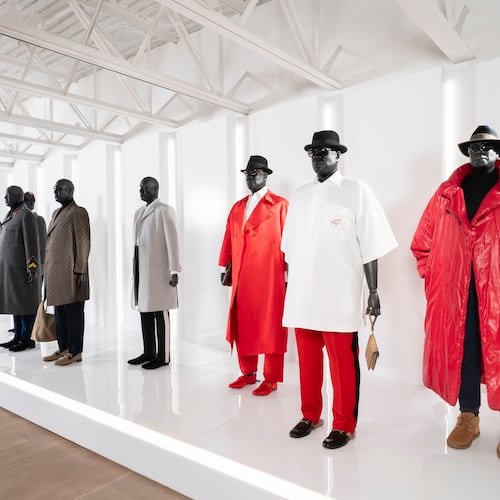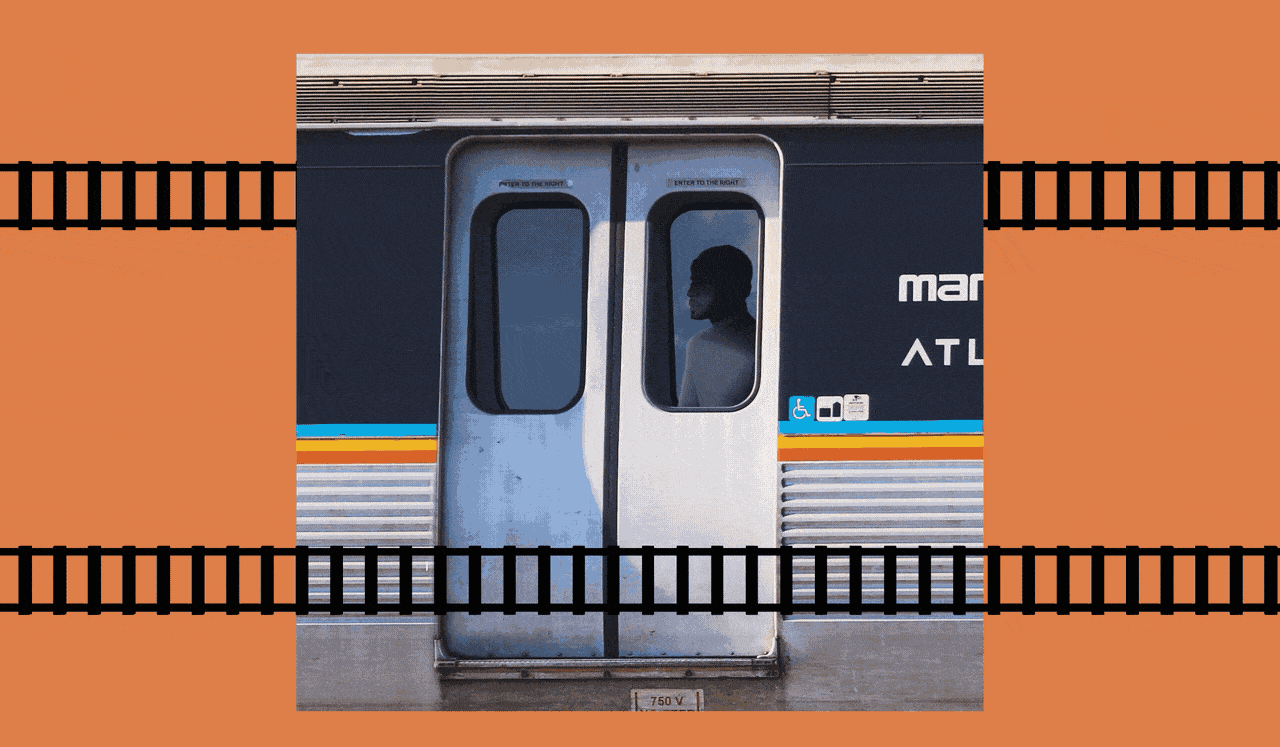This story was originally published by ArtsATL.
The title “… an Atlanta Biennial …” is a bit tongue-in-cheek because of the trappings associated with biennials. Its spirit somewhat reminds me of the original 1980s “Atlanta Biennales” organized by Nexus Contemporary Art Center, where I served as executive director from 1983 to 1998. Nexus later became the Atlanta Contemporary.
Whereas those early shows were wild, woolly and inclusive, this biennial has other curatorial ambitions. That it met its goal to demonstrate that Atlanta is home to artists who are competitive on a national and international basis goes without saying. Its purposeful alignment with Atlanta Art Fair and Atlanta Art Week amplified this message.
This is the Temporary Art Center’s third project, and we have artist Scott Ingram and project manager Saskia Benjamin to thank for their drive, energy and commitment. The first iteration took place at the now-defunct Hathaway Gallery on the Westside in 2018. The second iteration was mounted in 2019 in the Conklin Metal Industries building near downtown Atlanta. That effort required cleaning and preparing the 30,000 square feet of unused industrial space, which allowed for large work and site-specific installations. It was a heady experience.
Credit: Photo courtesy of the artists and Temporary Art Center
Credit: Photo courtesy of the artists and Temporary Art Center
Now, in 2024, Ingram and Benjamin have further professionalized their effort without veering from the old alternative art space mantra — “by artists for artists.”
For this iteration, Ingram recruited three other artists/curators/activists to form the curatorial team: Antonio Darden, Melissa Messina and Fahamu Pecou. Three of the four curators are working artists and have work in the show, in the spirit of artist-organized exhibitions. While a questionable practice in a museum context, the energy that the curators provide through inclusion of their own work is palpable. It was in their self-interest to show their best and the best of everyone invited to participate.
The exhibition is installed on the ground floor of a donated space in one of the new office buildings by the Beltline that makes you wonder, “Am I in Atlanta?” The raw space, which will inevitably be leased to a trendy business, has been fully transformed into a magnificent gallery for the current show. Ingram worked with architects to create a thoughtful design that required building and installing temporary walls and lighting (a shoutout to those who worked on the build-out). The resulting installation incorporates high production values, contributing to the project’s overall success.
Credit: Photo courtesy of Shawn Campbell and Temporary Art Center
Credit: Photo courtesy of Shawn Campbell and Temporary Art Center
Through a collaborative curatorial process that considered more than 100 artists, 30 intergenerational artists were ultimately invited to participate. They range from young artists such as painter Aineki Traverso, photographer and installation artist Jackson Markovic and trickster sculptor Shawn Campbell to seasoned Atlanta veterans such as sculptor Curtis Patterson and multidisciplinary artist Lonnie Holley.
Each artist has risen to the occasion with a combination of new work created specifically for “… an Atlanta Biennial …” or, in some cases, recent work. The exhibition was designed to accommodate large-scale wall works including those by artists Paul Stephen Benjamin, Alfred Conteh, Craig Drennen and Sonya Yong James. Rising star Hasani Sahlehe is represented by one of his breakthrough paintings that balances formal issues of abstraction and the physicality of paint and painting. At the same time, smaller works, including by María Korol, provide an intimacy that hold their own.
Large site-specific storefront installations draw people into the exhibition and are spectacular when illuminated at night. Interestingly, they are contrasting parades: William Downs’ “Born to Run” is one of his signature black and white wall murals with a cast of characters in raucous formation. Tori Tinsley’s is a three-dimensional parade of another sort that draws upon her cartoon-esque vocabulary. Constructed of cardboard that she embraces rather than hides, “A Lifeline of Joy and Worry” is dominated by a large 3D donkey in front of a colorful landscape with a line of small donkeys at its feet. Channeling the surrealism of Mexican folk art, Tinsley has created a captivating, signature work.
Among the highlights is Jill Frank’s “Structure #1 (Discordant Pyramid),” a photographic collage installation that deconstructs a formation of Brenau University cheerleaders. In her work, Frank has demonstrated a gift to capture the intensity of the faces, bodies and souls of her subjects, and this skill is in full force here. Strategically positioned, the installation calls out the negative spaces, enhanced by its black and white prints, whose backgrounds have been stripped to a deep black. The result is hypnotic.
Credit: Photo courtesy of Joe Peragine, Mary Hallam Pearse and Temporary Art Center
Credit: Photo courtesy of Joe Peragine, Mary Hallam Pearse and Temporary Art Center
“… an Atlanta Biennial …” spills out to the exterior. In addition to Micah and Whitney Stansell’s one-night only projection, the exhibition takes advantage of the multistory staircase leading up to the Beltline, including works by Mark Wentzel and Jane Foley. At the top of the stairwell, attracting Beltline pedestrians, is Joe Peragine and Mary Hallam Pearce’s monumental “Steered by Falling Stars,” a skull covered with plastic flowers collected from cemeteries across Georgia. The work is a memento mori, a reminder of the fragility of life.
And speaking of which, an early, poignant 1992 work by the late Radcliffe Bailey has been positioned at the gallery entrance. An untitled self-portrait, the painting was included in the 1992 “Atlanta Biennale” at Nexus Gallery, personally bringing me full circle. I remember well the shy artist who we all knew was destined for greatness. As his career exploded, Bailey chose to stay in Atlanta and demonstrate to our community and to the world that our city is a place that an artist can thrive.
“… an Atlanta Biennial …” is a challenge to all of us to keep on striving to create an arts ecology in which artists, collectors and institutions can thrive. That it took a DIY project (at the end of the day, this is what the project is) should put our art galleries and museums on notice to take heed of the excitement this exhibition has generated. And, for the record, let’s acknowledge that an equally strong exhibition with a totally different group of artists could have been curated — that’s how deep the talent is in Atlanta.
ART REVIEW
“… an Atlanta Biennial …”
Through Nov. 3 at the Temporary Art Center. Hours vary. 405 N. Angier Ave. NE, Atlanta. thetemporaryatlanta.com
::
Louise E. Shaw has been a cultural worker in Atlanta for more than 40 years. She served as executive director of Nexus Contemporary Art Center from 1983 to 1998 and was on Eyedrum’s ad hoc advisory board in the 2000s.
Credit: ArtsATL
Credit: ArtsATL
MEET OUR PARTNER
ArtsATL (artsatl.org) is a nonprofit organization that plays a critical role in educating and informing audiences about metro Atlanta’s arts and culture. ArtsATL, founded in 2009, helps build a sustainable arts community contributing to the economic and cultural health of the city.
If you have any questions about this partnership or others, please contact Senior Manager of Partnerships Nicole Williams at nicole.williams@ajc.com.
About the Author
Keep Reading
The Latest
Featured







